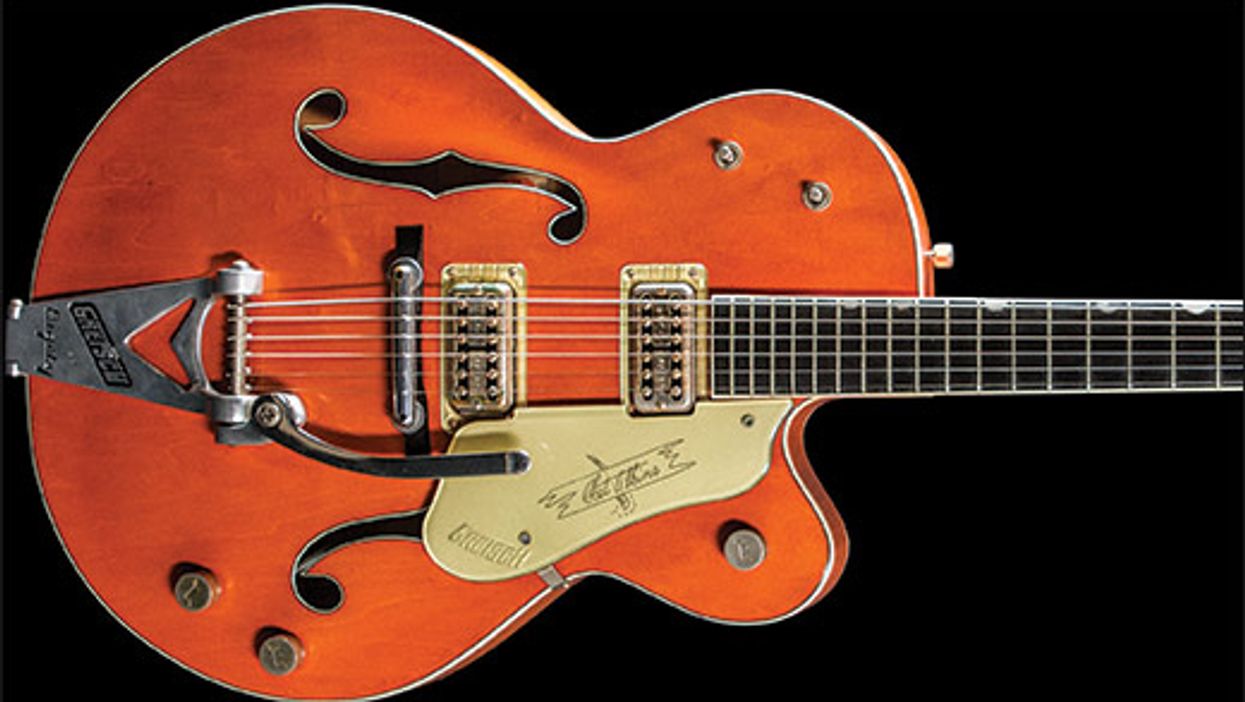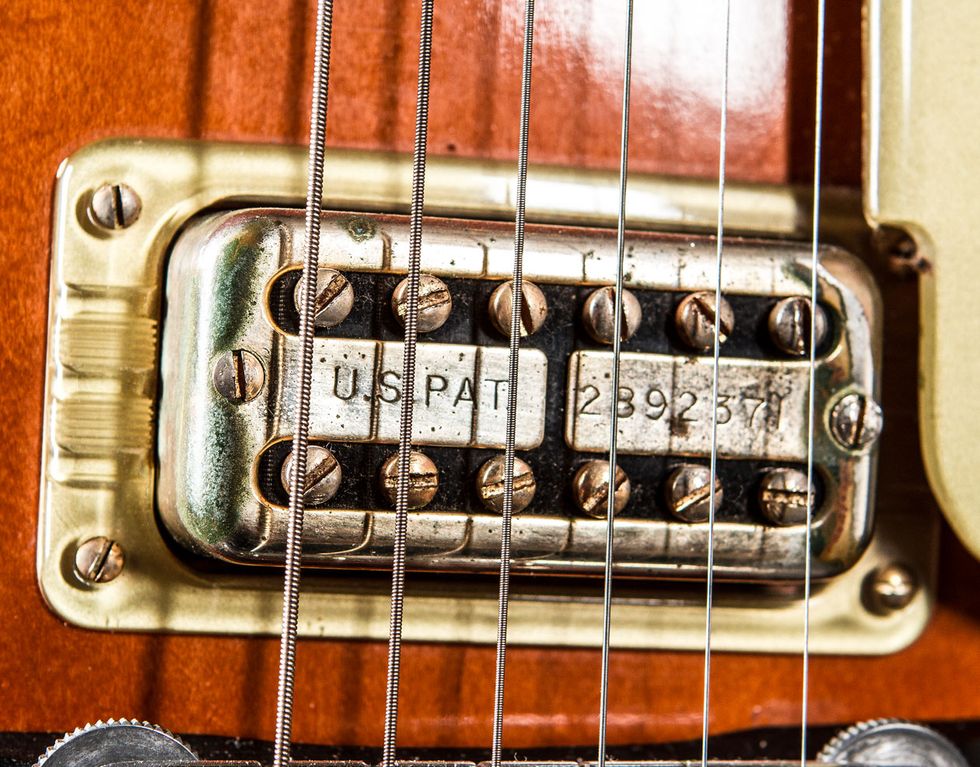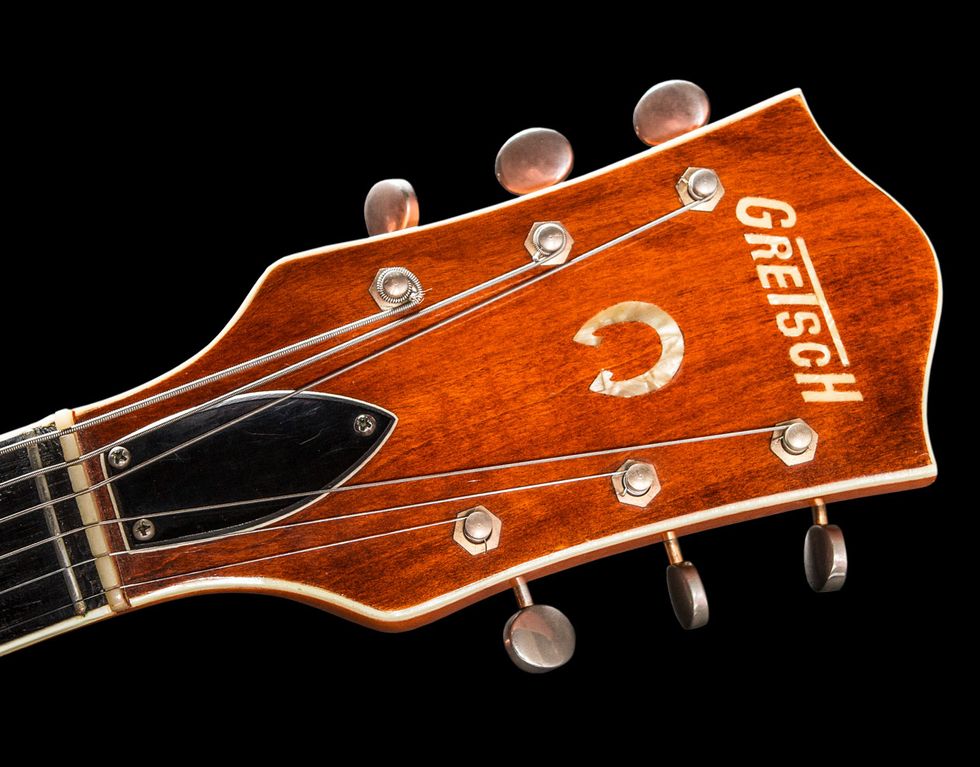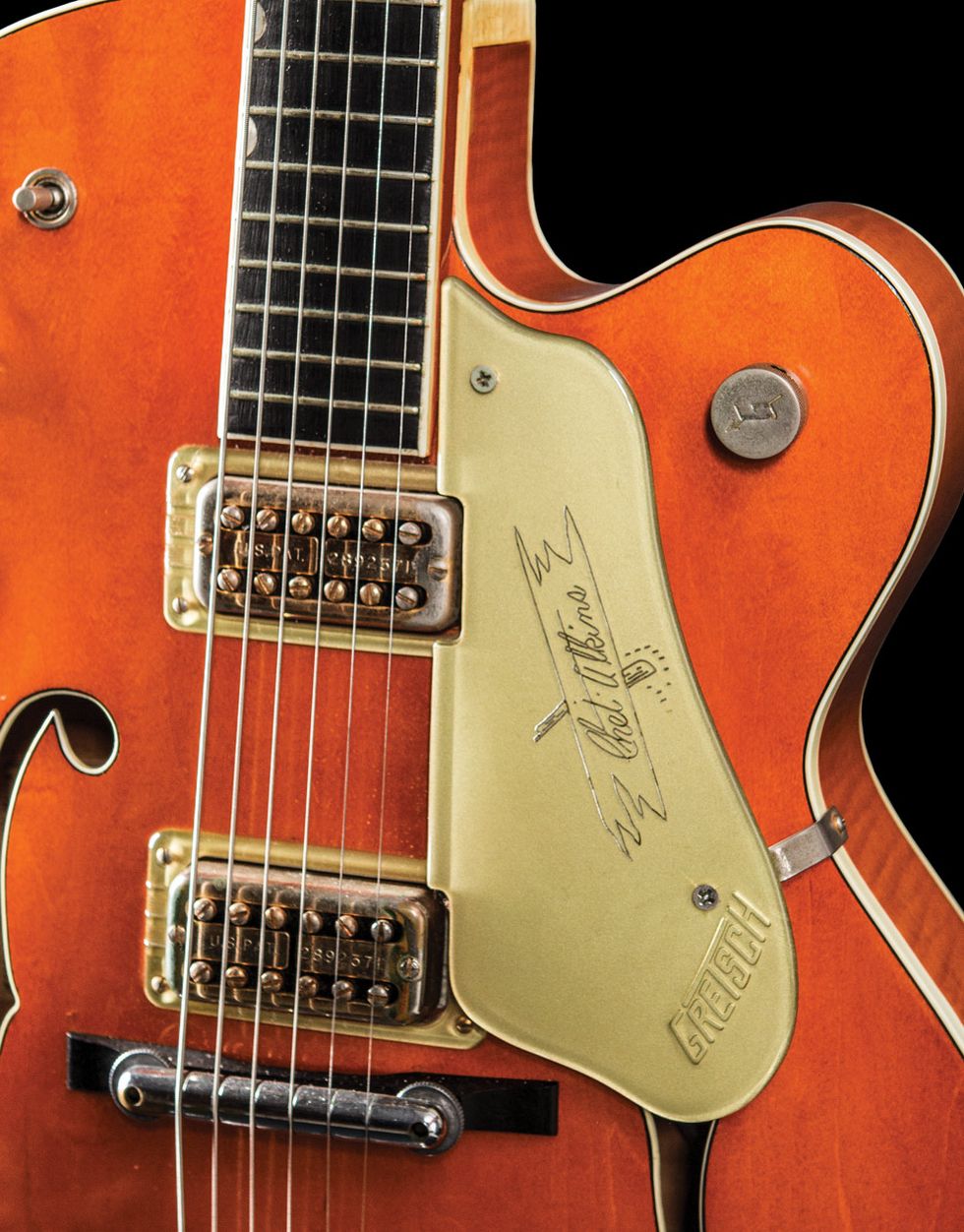In the early part of 1954, Gretsch special representative Jimmie Webster convinced up-and-coming virtuoso guitarist Chet Atkins to sign on and endorse the company by having a signature guitar. Atkins, seeing Les Paul's success with his own Gibson Les Paul Model, agreed to collaborate with Gretsch on a guitar eventually known as the Chet Atkins Hollowbody. The new instrument had a 22-fret neck with a 24 1/2" scale length, although a few early examples had only 21 frets. The body was 15 1/2" wide and 2 3/4" deep.
The Atkins 6120's original pickups had a twangy sound the guitar's namesake didn't favor, so he asked amp builder
Ray Butts to design a warmer set that became standard on all top-end Gretsches.
Since Atkins was mostly known as a country guitarist, Gretsch originally gave the hollowbody an over-the-top cowboy look, which included cow and cactus fretboard inlays and a “G" brand on the body. Atkins disliked the outlandish Western decorations and was able to get the guitar's looks toned down as the years progressed.
The horseshoe on the model's headstock was the last vestige of the Western theme featured on the original production examples by the time this instrument was built in 1960.
The original DeArmond pickups were also offensive to Chet, with their strong magnetic pull and twangy sound. The single-coil, 60-cycle hum made capturing a clean, clear sound tricky while recording. Chet developed a relationship with amp builder Ray Butts, who eventually designed some experimental humbuckers for this guitar. Chet approved of the sound, and by 1958 the Butts-designed pickups were produced by Gretsch to be included on all their top-end guitars.
In 1960, the Chet Atkins Hollowbody Model 6120's body depth shrank to 2 1/2" from its original 2 3/4" thickness.
The 1960 Chet Atkins Hollowbody pictured this month has the typical characteristics of 6120 models produced for that year. These include a bright orange “Amber Red" stained laminated maple top, back, and sides; a body depth of 2 1/2" (it was 2 3/4" until that year); an ebony fretboard with neoclassic inlays (which replaced hump-block inlays in1958); Filter'Tron humbucking pickups (which also replaced DeArmonds in1958); a zero fret, which negated the need for a brass nut starting in 1959; a V-style Gretsch by Bigsby tailpiece that replaced the regular black enamel-faced Bigsby; and a bar bridge, which debuted on the model in 1957. This guitar is among the earliest 6120s to have patent numbers on the pickups. The 1960 list price was $425. The current value for one in excellent all-original condition is $7,500.
Sources for this article include Gretsch: The Guitars of the Fred Gretsch Company by Jay Scott, Gretsch 6120: The History of a Legendary Guitar by Edward Ball, 50 Years of Gretsch Electrics by Tony Bacon, and Ball's Manual of Gretsch Guitars: 1950s by Edward Ball.

















![Rig Rundown: Russian Circles’ Mike Sullivan [2025]](https://www.premierguitar.com/media-library/youtube.jpg?id=62303631&width=1245&height=700&quality=70&coordinates=0%2C0%2C0%2C0)




